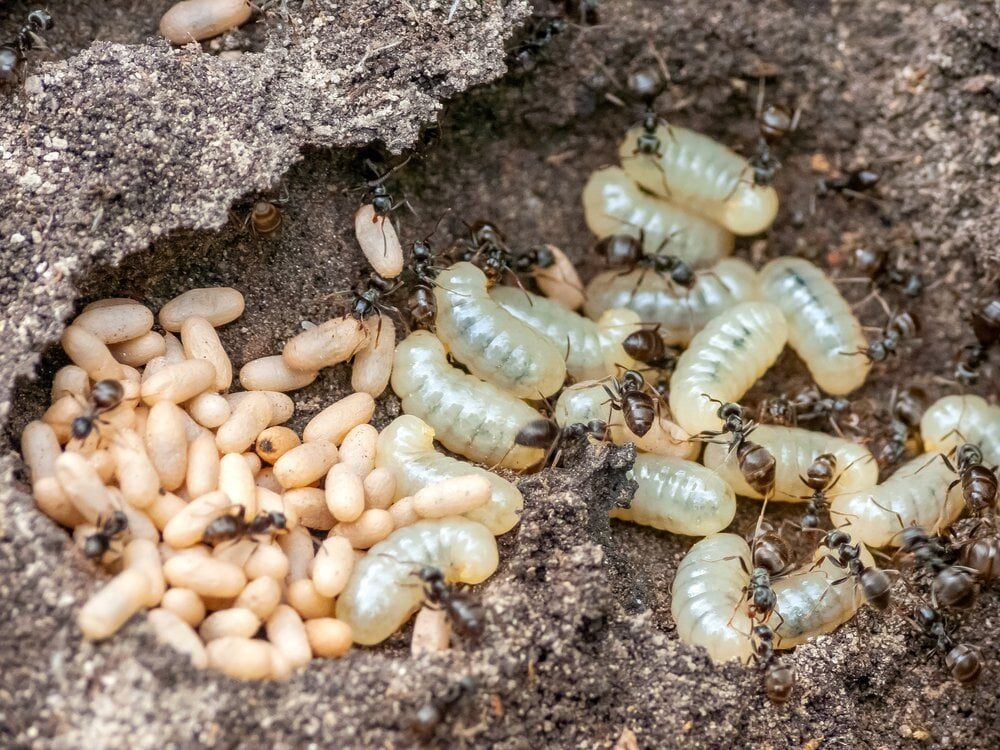
© Jasius via Getty ImagesAnt species across five subfamilies exchange milk-like substances.
Scientists have observed ants feasting on a nutrient-rich substance released by other ants.
Pupae, ants in the last stage of ant metamorphosis before they become adults, secrete the liquid. Both adult ants and ant larvae consume it, and this exchange appears vital for survival."We identified a mechanism that unites the colony, binding ants across developmental stages — adults, larvae and pupae — into a coherent entity, the superorganism,"
Orli Snir, first author of the study and a biologist at the Rockefeller University, tells
Nature News' Miryam Naddaf.
"It is a really neat study, because it is identifying a
new type of social transfer that no one had even really noticed before,"
Adria LeBoeuf, who studies fluid exchange between ants at the University of Fribourg in Switzerland and did not contribute to the study, tells
The Scientist's Viviane Callier.
The findings were published November 30 in the journal
Nature.
Snir first noticed the substance when she isolated clonal raider ant pupae from their colony to study them, writes the
New York Times' Joshua Sokol. The pupae produced so much liquid that they drowned in it.
To find out if pupae still made the substance around other ants — and if they did, what happened to it — Snir injected pupae with a blue dye and returned them to their colony, per
National Geographic's Tim Vernimmen. Within 24 hours, the scientists could see the dye staining the guts of both the adult ants and larvae, suggesting the other ants were consuming the liquid. The researchers also observed adults seemingly placing larvae on the pupae so they could feed, per the
Times.
The scientists analyzed the liquid and found it contained proteins, amino acids, sugars and vitamins, according to
Nature News.
They also found that without the liquid, larvae had stunted growth and lower survival rates. So the liquid seems to function as a "milk" of sorts, providing essential nutrients to developing ants.Scientists aren't sure if the adults benefit directly from consuming the milk, per the
Times. But it does help the pupae — if the milk wasn't consumed, the pupae died from fungal infections.
After studying clonal raider ants, the researchers also examined some other ant species found in Central Park in New York City, per
The Scientist. They found that pupae produced milk that other ants consumed in species from each of the five biggest ant subfamilies, writes
Nature News.
The fact that this behavior is seen across subfamilies suggests it could be found in many ant species, study co-author
Daniel Kronauer, who studies ants at the Rockefeller University, tells
National Geographic.
This pupal milk could also possibly be part of the reason why ants have evolved to become such socially codependent insects, per the
Times.
"This fluid may have aided the evolution of [the ants'] cooperative brood care, as it incentivized adults to care for the young," LeBoeuf says to
National Geographic.
The researchers now want to look at how the milk might shape adult and larvae behavior and physiology, per
Nature News.
"I think we'll see a lot more studies building off what was discovered here,"
Adrian Smith, a biologist at North Carolina State University who was not involved in the study, tells the
Times.

Reader Comments
Perhaps after the High Vegan Council has decided if ants have faces, or not ...